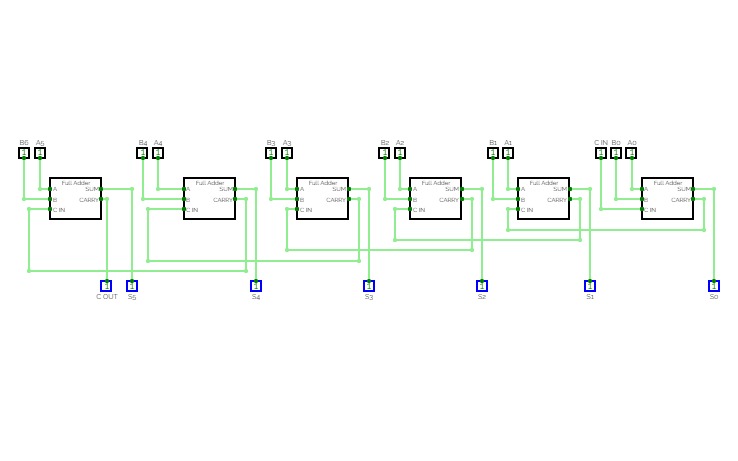6-bit Ripple Carry Adder
6-bit Ripple Carry AdderTo create a ripple carry adder capable of adding two 6-bit binary numbers, you can connect multiple full adders in a cascaded manner. The carry output of one full adder is fed as the carry input of the next full adder in the chain.
Here's how a 6-bit ripple carry adder operates:
The least significant bits of the two 6-bit binary numbers (A0 and B0) are fed as inputs to the first full adder (FA0) along with a carry-in of 0 (since there's no carry from a lower significant position).
The sum output of FA0 gives the least significant bit of the final sum, and the carry output is fed as the carry-in to the next full adder (FA1).
FA1 takes the second bits of the binary numbers (A1 and B1) as inputs, along with the carry output from FA0 as the carry-in.
This process continues for the remaining full adders (FA2, FA3, FA4, FA5), with each full adder taking the corresponding bits of the binary numbers and the carry output from the previous full adder as inputs.
The sum outputs of each full adder collectively form the final sum, and the carry output of the most significant full adder (FA5) becomes the carry-out of the entire 6-bit ripple carry adder.








